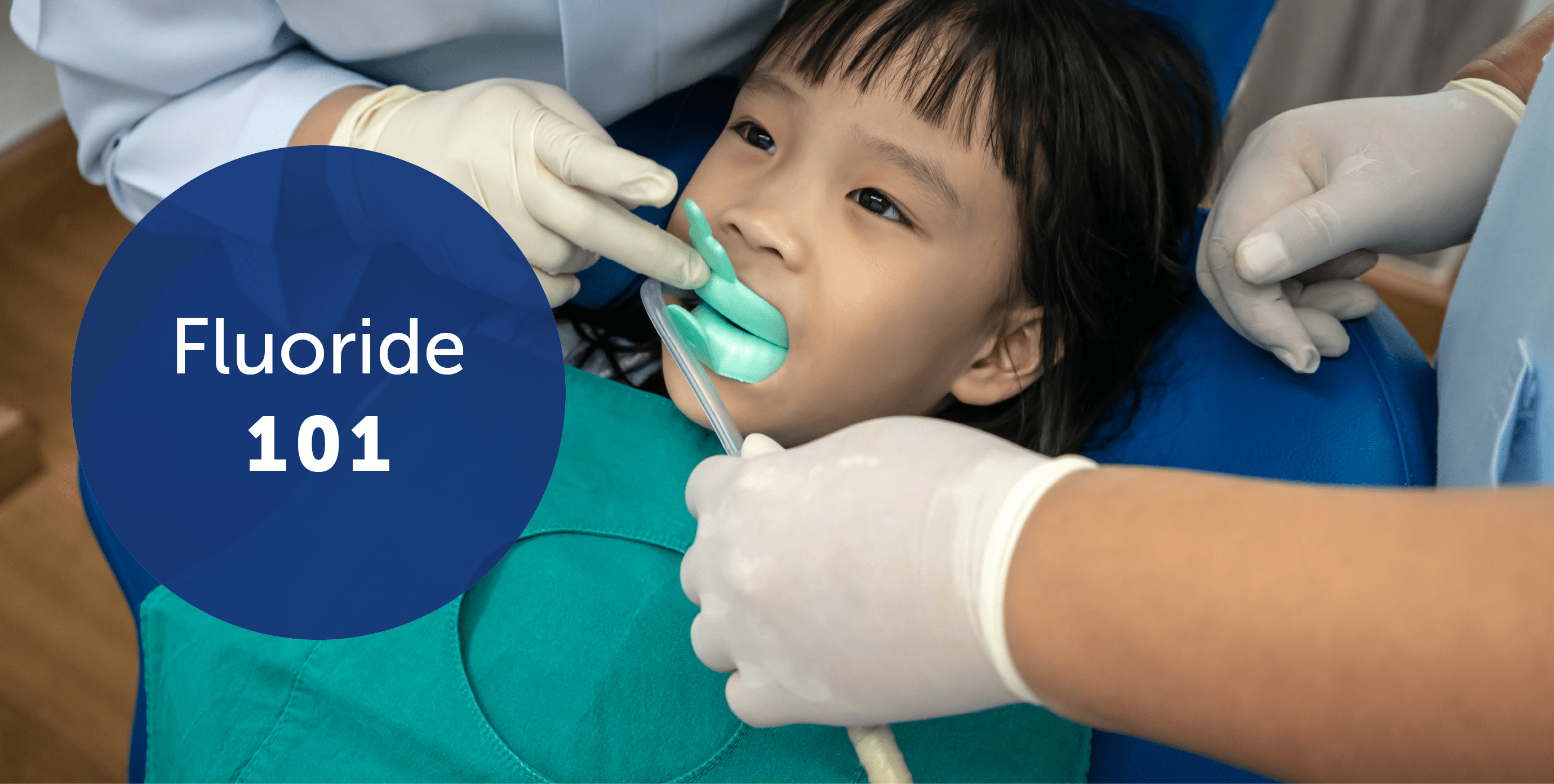Fluoride 101

What is fluoride?
Fluoride is a key mineral for strong, healthy teeth. Most water naturally contains fluoride but usually not enough to prevent tooth decay. Because teeth benefit from consistent exposure to fluoride, many communities add fluoride to water supplies. Approximately 75% of the U.S. population on public water systems benefits from regular access to fluoridated tap water.
Why is fluoride important?
Fluoride strengthens tooth enamel, which helps protect your teeth from decay. It also combats acids in your mouth that can cause cavities. Fluoride can even rebuild the surface of your teeth in the early stages of tooth decay.
Who needs fluoride treatment?
The amount of fluoride an individual would need depends on their risk level for tooth decay. Many people are at a lower risk for cavities due to fluoridated water, toothpaste, and better oral hygiene. Children ages six and up who are at moderate or high risk of tooth decay can benefit from fluoride treatments. Adults who are prone to cavities, suffer from dry mouth, or have a condition that puts them at risk (such as diabetes, eating disorders or cancer) may also want to consider adding a fluoride treatment during dentist visits.
Most plans only cover fluoride treatments up until a certain age, 14. Some group and individual plans – along with our Enhanced Benefits Program – may also cover these treatments after 14 years of age. Talk to your dentist about your risk for cavities. They can help determine the most appropriate treatment based on your oral health and history.
How is fluoride applied?
Dentists can apply fluoride to teeth in gel form or varnish during office visits. After your fluoride treatment, you should avoid eating or drinking for at least 30 minutes.
What’s the difference between fluoride toothpaste and fluoride treatment?
Your everyday fluoride toothpaste is essential, but it doesn’t have the same impact as a professionally applied fluoride treatment. Here’s why:
- Professional fluoride treatments have a higher level of fluoride, which you can’t get without a prescription.
- The dentist or hygienist usually applies the fluoride to freshly professionally cleaned teeth, making it even more effective.
75% of fluoride consumption in the United States comes from drinking water and processed beverages such as soft drinks and fruit juices. With the addition of fluoride toothpaste, most Americans are covered in terms of fluoride intake. However, it’s important to talk with your dentist to see if additional fluoride treatments are needed based on your individual oral health and medical history.


Comments (1)
Fluoride treatments are safe and effective. Fluoride has been used for decades to protect tooth enamel in kids and adults https://diamonddentalassociates.com/in-office-fluoride-treatments-not-only-for-kids-huge-benefit-for-adults-too/ fluoride gel treatment helps prevent tooth decay by making the tooth more resistant to acid attacks from plaque bacteria and sugars in the mouth.
Add comment